{"video":[{"pos":{"top":0,"left":0},"time":{"start":145,"end":3741.477732},"spot":null,"idx":0,"id":"vd-0","videoId":0},{"pos":{"top":0,"left":0},"time":{"start":765,"end":3741.477732},"spot":null,"idx":1,"id":"vd-1","videoId":1},{"pos":{"top":0,"left":0},"time":{"start":2092,"end":3741.477732},"spot":null,"idx":2,"id":"vd-2","videoId":2},{"pos":{"top":0,"left":0},"time":{"start":213,"end":3741.477732},"spot":null,"idx":3,"id":"vd-3","videoId":3},{"pos":{"top":0,"left":0},"time":{"start":2120,"end":3741.477732},"spot":null,"idx":4,"id":"vd-4","videoId":4},{"pos":{"top":0,"left":0},"time":{"start":2400,"end":3741.477732},"spot":null,"idx":5,"id":"vd-5","videoId":5},{"pos":{"top":0,"left":0},"time":{"start":858,"end":3741.477732},"spot":null,"idx":6,"id":"vd-6","videoId":6},{"pos":{"top":0,"left":0},"time":{"start":696,"end":3741.477732},"spot":null,"idx":7,"id":"vd-7","videoId":7},{"pos":{"top":0,"left":0},"time":{"start":660,"end":3741.477732},"spot":null,"idx":8,"id":"vd-8","videoId":8},{"pos":{"top":0,"left":0},"time":{"start":1042,"end":3741.477732},"spot":null,"idx":9,"id":"vd-9","videoId":9},{"pos":{"top":0,"left":0},"time":{"start":0,"end":3741.477732},"spot":null,"idx":10,"id":"vd-10","videoId":10}],"contents":[{"id":"wk-0","pos":{"top":5,"left":96},"time":{"start":307,"end":337},"art":"Albert Kesselring","lang":"en","wiki":"<div style=\"float:left;margin-right:10px\"><img src=\"http://upload.wikimedia.org/wikipedia/commons/thumb/0/0f/Bundesarchiv_Bild_183-R93434,_Albert_Kesselring.jpg/220px-Bundesarchiv_Bild_183-R93434,_Albert_Kesselring.jpg\"></div><br><div>\n<p><b>Albert Kesselring</b> (30 November 1885 – 16 July 1960) was a German <i>Luftwaffe Generalfeldmarschall</i> during World War II. In a military career that spanned both World Wars, Kesselring became one of Nazi Germany's most skilful commanders, being one of 27 soldiers awarded the Knight's Cross of the Iron Cross with Oak Leaves, Swords and Diamonds. Nicknamed \"Smiling Albert\" by the Allies and \"Uncle Albert\" by his troops, he was one of the most popular generals of World War II with the rank and file.</p>\n<p>Kesselring joined the Bavarian Army as an officer cadet in 1904, and served in the artillery branch. He completed training as a balloon observer in 1912. During World War I, he served on both the Western and Eastern fronts and was posted to the General Staff, despite not having attended the War Academy. Kesselring remained in the Army after the war but was discharged in 1933 to become head of the Department of Administration at the Reich Commissariat for Aviation, where he was involved in the re-establishment of the aviation industry and the laying of the foundations for the <i>Luftwaffe</i>, serving as its chief of staff from 1936 to 1938.</p>\n<p>During World War II he commanded air forces in the invasions of Poland and France, the Battle of Britain and Operation <i>Barbarossa</i>. As Commander-in-Chief South, he was overall German commander in the Mediterranean theatre, which included the operations in North Africa. Kesselring conducted an uncompromising defensive campaign against the Allied forces in Italy until he was injured in an accident in October 1944. In the final campaign of the war, he commanded German forces on the Western Front. He won the respect of his Allied opponents for his military accomplishments, but his record was marred by massacres committed by troops under his command in Italy.</p>\n<p>After the war, Kesselring was tried for war crimes and sentenced to death. The sentence was subsequently commuted to life imprisonment. A political and media campaign resulted in his release in 1952, ostensibly on health grounds. He was one of only three <i>Generalfeldmarschalls</i> to publish his memoirs, entitled <i>Soldat bis zum letzten Tag</i> (<i>A Soldier to the Last Day</i>).<br>\n</p>\n\n\n\n<!-- \nNewPP limit report\nParsed by mw1126\nCached time: 20151020102218\nCache expiry: 86400\nDynamic content: true\nCPU time usage: 0.260 seconds\nReal time usage: 0.317 seconds\nPreprocessor visited node count: 1044/1000000\nPreprocessor generated node count: 0/1500000\nPost‐expand include size: 16009/2097152 bytes\nTemplate argument size: 4072/2097152 bytes\nHighest expansion depth: 16/40\nExpensive parser function count: 1/500\nLua time usage: 0.063/10.000 seconds\nLua memory usage: 1.55 MB/50 MB\nNumber of Wikibase entities loaded: 0-->\n\n<!-- \nTransclusion expansion time report (%,ms,calls,template)\n100.00% 292.301 1 - -total\n 47.24% 138.072 1 - Template:Infobox_military_person\n 44.51% 130.106 1 - Template:Infobox\n 23.11% 67.541 2 - Template:Broken_ref\n 16.97% 49.609 3 - Template:Br_separated_entries\n 16.10% 47.061 1 - Template:Use_dmy_dates\n 6.85% 20.023 1 - Template:DMCA\n 6.13% 17.914 1 - Template:Birth_date\n 5.87% 17.146 1 - Template:Dated_maintenance_category\n 5.60% 16.357 3 - Template:Flag\n-->\n</div><a href=\"http://en.wikipedia.org/wiki/Albert Kesselring\" target=\"_blank\">Continua a leggere..</a>","title":"Albert Kesselring"},{"id":"wk-1","pos":{"top":5,"left":96},"time":{"start":343,"end":373},"art":"Adolf Hitler","lang":"en","wiki":"<div style=\"float:left;margin-right:10px\"><img src=\"http://upload.wikimedia.org/wikipedia/commons/thumb/a/ab/Bundesarchiv_Bild_183-H1216-0500-002,_Adolf_Hitler.jpg/220px-Bundesarchiv_Bild_183-H1216-0500-002,_Adolf_Hitler.jpg\"></div><br><div>\n\n<p><b>Adolf Hitler</b> (20 April 1889 – 30 April 1945) was an Austrian-born German politician who was the leader of the Nazi Party (NSDAP), Chancellor of Germany from 1933 to 1945, and Führer (\"leader\") of Nazi Germany from 1934 to 1945. As effective dictator of Nazi Germany, Hitler was at the centre of World War II in Europe and the Holocaust.</p>\n<p>Hitler was a decorated veteran of World War I. He joined the precursor of the NSDAP, the German Workers' Party, in 1919 and became leader of the NSDAP in 1921. In 1923 he attempted a coup in Munich to seize power. The failed coup resulted in Hitler's imprisonment, during which time he dictated his autobiography and political manifesto <i>Mein Kampf</i> (\"My Struggle\"). After his release in 1924, Hitler gained popular support by attacking the Treaty of Versailles and promoting Pan-Germanism, anti-Semitism, and anti-communism with charismatic oratory and Nazi propaganda. Hitler frequently denounced international capitalism and communism as being part of a Jewish conspiracy.</p>\n<p>Hitler's Nazi Party became the largest elected party in the German Reichstag, leading to his appointment as chancellor in 1933. Following fresh elections won by his coalition, the Reichstag passed the Enabling Act, which began the process of transforming the Weimar Republic into Nazi Germany, a single-party dictatorship based on the totalitarian and autocratic ideology of National Socialism. Hitler aimed to eliminate Jews from Germany and establish a New Order to counter what he saw as the injustice of the post-World War I international order dominated by Britain and France. His first six years in power resulted in rapid economic recovery from the Great Depression, the denunciation of restrictions imposed on Germany after World War I, and the annexation of territories that were home to millions of ethnic Germans—actions which gave him significant popular support.</p>\n<p>Hitler sought <i>Lebensraum</i> (\"living space\") for the German people. His aggressive foreign policy is considered to be the primary cause of the outbreak of World War II in Europe. He directed large-scale rearmament and on 1 September 1939 invaded Poland, resulting in British and French declarations of war on Germany. In June 1941, Hitler ordered an invasion of the Soviet Union. By the end of 1941 German forces and the European Axis powers occupied most of Europe and North Africa. Failure to defeat the Soviets and the entry of the United States into the war forced Germany onto the defensive and it suffered a series of escalating defeats. In the final days of the war, during the Battle of Berlin in 1945, Hitler married his long-time lover, Eva Braun. On 30 April 1945, less than two days later, the two committed suicide to avoid capture by the Red Army, and their corpses were burned.</p>\n<p>Under Hitler's leadership and racially motivated ideology, the Nazi regime was responsible for the genocide of at least 5.5 million Jews and millions of other victims whom he and his followers deemed <i>Untermenschen</i> (\"sub-humans\") and socially undesirable. Hitler and the Nazi regime were also responsible for the killing of an estimated 19.3 million civilians and prisoners of war. In addition, 29 million soldiers and civilians died as a result of military action in the European Theatre of World War II. The number of civilians killed during the Second World War was unprecedented in warfare, and constitutes the deadliest conflict in human history.</p>\n\n\n\n<!-- \nNewPP limit report\nParsed by mw1190\nCached time: 20151020132839\nCache expiry: 86400\nDynamic content: true\nCPU time usage: 0.623 seconds\nReal time usage: 0.729 seconds\nPreprocessor visited node count: 7804/1000000\nPreprocessor generated node count: 0/1500000\nPost‐expand include size: 34262/2097152 bytes\nTemplate argument size: 7543/2097152 bytes\nHighest expansion depth: 17/40\nExpensive parser function count: 5/500\nLua time usage: 0.216/10.000 seconds\nLua memory usage: 2.74 MB/50 MB\nNumber of Wikibase entities loaded: 0-->\n\n<!-- \nTransclusion expansion time report (%,ms,calls,template)\n100.00% 675.517 1 - -total\n 67.68% 457.169 1 - Template:Infobox_officeholder\n 62.41% 421.611 7 - Template:Infobox\n 26.70% 180.363 17 - Template:Infobox_officeholder/office\n 14.06% 94.990 1 - Template:Pp-semi-indef\n 6.50% 43.892 1 - Template:Good_article\n 6.00% 40.531 1 - Template:Top_icon\n 5.25% 35.465 1 - Template:Redirect\n 4.27% 28.811 1 - Template:Category_handler\n 3.84% 25.923 1 - Template:Use_British_English\n-->\n</div><a href=\"http://en.wikipedia.org/wiki/Adolf Hitler\" target=\"_blank\">Continua a leggere..</a>","title":"Adolf Hitler"},{"id":"wk-2","pos":{"top":5,"left":96},"time":{"start":424.2,"end":454.2},"art":"Sulfur mustard","lang":"en","wiki":"<div style=\"float:left;margin-right:10px\"><img src=\"http://upload.wikimedia.org/wikipedia/commons/thumb/2/2f/Sulfur-mustard-2D-skeletal.png/200px-Sulfur-mustard-2D-skeletal.png\"></div><br><div>\n<p>Mustard agent, or the <b>sulphur mustards</b>, commonly, but erroneously, known as <b>mustard gas,</b> is a class of related cytotoxic and vesicant chemical warfare agents with the ability to form large blisters on the exposed skin and in the lungs. Pure sulfur mustards are colorless, viscous liquids at room temperature. When used in impure form, such as warfare agents, they are usually yellow-brown in color and have an odor resembling mustard plants, garlic, or horseradish, hence the name. Mustard agent was originally assigned the name LOST, after the scientists Wilhelm Lommel and Wilhelm Steinkopf, who developed a method for the large-scale production of mustard agent for the Imperial German Army in 1916.</p>\n<p>Mustard agents are regulated under the 1993 Chemical Weapons Convention (CWC). Three classes of chemicals are monitored under this Convention, with sulfur and nitrogen mustard grouped in Schedule 1, as substances with no use other than in chemical warfare. Mustard agents could be deployed on the battlefield by means of artillery shells, aerial bombs, rockets, or by spraying from warplanes.</p>\n\n\n\n<!-- \nNewPP limit report\nParsed by mw1192\nCached time: 20151020135903\nCache expiry: 2592000\nDynamic content: false\nCPU time usage: 0.665 seconds\nReal time usage: 0.788 seconds\nPreprocessor visited node count: 4997/1000000\nPreprocessor generated node count: 0/1500000\nPost‐expand include size: 62586/2097152 bytes\nTemplate argument size: 19202/2097152 bytes\nHighest expansion depth: 20/40\nExpensive parser function count: 1/500\nLua time usage: 0.207/10.000 seconds\nLua memory usage: 3.39 MB/50 MB\nNumber of Wikibase entities loaded: 0-->\n\n<!-- \nTransclusion expansion time report (%,ms,calls,template)\n100.00% 770.238 1 - -total\n 81.91% 630.892 1 - Template:Chembox\n 27.04% 208.277 1 - Template:Chembox_Identifiers\n 25.57% 196.974 1 - Template:Chembox_Properties\n 10.05% 77.379 1 - Template:Chembox_Hazards\n 8.52% 65.629 1 - Template:Chembox_Elements\n 7.76% 59.803 7 - Template:Chembox_removeInitialLinebreak\n 7.13% 54.913 5 - Template:Convert\n 5.42% 41.740 5 - Template:Yesno\n 5.30% 40.859 1 - Template:Chembox_Footer\n-->\n</div><a href=\"http://en.wikipedia.org/wiki/Sulfur mustard\" target=\"_blank\">Continua a leggere..</a>","title":"Sulfur mustard"},{"id":"wk-3","pos":{"top":5,"left":96},"time":{"start":649.7,"end":679.7},"art":"Motor Torpedo Boat","lang":"en","wiki":"<div>\n\n\n<p><b>Motor Torpedo Boat</b> (MTB) was the name given to fast torpedo boats by the Royal Navy and the Royal Canadian Navy. The 'motor' in the formal designation, referring to the use of petrol engines, was to distinguish them from the majority of other naval craft that used steam turbines or reciprocating steam engines.</p>\n<p>The capitalised term is generally used for the Royal Navy (RN) boats and abbreviated to \"MTB\". During the Second World War the US Navy boats were usually called by their hull classification symbol of \"PT\" (Patrol, Torpedo), and are covered under PT boat although the class type were still \"motor torpedo boats\".</p>\n<p>German motor torpedo boats of the Second World War were called <i>S-boote</i> (<i>Schnellboote</i>, \"fast boats\") by the <i>Kriegsmarine</i> and \"E-boats\" by the Allies. Italian MTBs of this period were known as <i>Motoscafo Armato Silurante</i> (\"MAS boats\", torpedo armed motorboats). French MTBs were known as <i>vedettes lance torpilles</i> (\"torpedo-launching fast boats\"). Soviet MTBs were known as <i>торпедные катеры</i> (<i>torpedny katery</i>; \"torpedo cutters\").</p>\n<p>After the end of the War in 1945, a number of the Royal Navy's MTBs were stripped and the empty hulls sold for use as houseboats.</p>\n\n\n<!-- \nNewPP limit report\nParsed by mw1130\nCached time: 20151020142616\nCache expiry: 2592000\nDynamic content: false\nCPU time usage: 0.092 seconds\nReal time usage: 0.117 seconds\nPreprocessor visited node count: 60/1000000\nPreprocessor generated node count: 0/1500000\nPost‐expand include size: 3412/2097152 bytes\nTemplate argument size: 10/2097152 bytes\nHighest expansion depth: 6/40\nExpensive parser function count: 1/500\nLua time usage: 0.031/10.000 seconds\nLua memory usage: 842 KB/50 MB\nNumber of Wikibase entities loaded: 0-->\n\n<!-- \nTransclusion expansion time report (%,ms,calls,template)\n100.00% 76.710 1 - Template:Ref_improve\n100.00% 76.710 1 - -total\n 59.66% 45.768 1 - Template:Ambox\n-->\n</div><a href=\"http://en.wikipedia.org/wiki/Motor Torpedo Boat\" target=\"_blank\">Continua a leggere..</a>","title":"Motor Torpedo Boat"},{"id":"wk-4","pos":{"top":5,"left":96},"time":{"start":710.5,"end":740.5},"art":"Messerschmitt Me 410","lang":"en","wiki":"<div style=\"float:left;margin-right:10px\"><img src=\"http://upload.wikimedia.org/wikipedia/commons/thumb/1/11/D-Me410.JPG/300px-D-Me410.JPG\"></div><br><div>\n<p>The <b>Messerschmitt Me 410 <i>Hornisse</i></b> (\"Hornet\") was a German heavy fighter and <i>Schnellbomber</i> used by the <i>Luftwaffe</i> during World War II. Though essentially a straightforward modification of the Me 210, it was designated the Me 410 to avoid association with its notoriously flawed predecessor.</p>\n\n\n<!-- \nNewPP limit report\nParsed by mw1234\nCached time: 20151020142710\nCache expiry: 2592000\nDynamic content: false\nCPU time usage: 0.032 seconds\nReal time usage: 0.042 seconds\nPreprocessor visited node count: 181/1000000\nPreprocessor generated node count: 0/1500000\nPost‐expand include size: 1900/2097152 bytes\nTemplate argument size: 601/2097152 bytes\nHighest expansion depth: 5/40\nExpensive parser function count: 0/500\nLua time usage: 0.005/10.000 seconds\nLua memory usage: 557 KB/50 MB\nNumber of Wikibase entities loaded: 0-->\n\n<!-- \nTransclusion expansion time report (%,ms,calls,template)\n100.00% 31.233 1 - -total\n 78.17% 24.415 1 - Template:Infobox_aircraft_begin\n 54.40% 16.991 1 - Template:WPMILHIST_Infobox_style\n 21.56% 6.735 1 - Template:Infobox_aircraft_type\n 5.14% 1.605 2 - Template:Nowrap\n-->\n</div><a href=\"http://en.wikipedia.org/wiki/Messerschmitt Me 410\" target=\"_blank\">Continua a leggere..</a>","title":"Messerschmitt Me 410"},{"id":"wk-5","pos":{"top":5,"left":96},"time":{"start":763,"end":793},"art":"Liberty ship","lang":"en","wiki":"<div style=\"float:left;margin-right:10px\"><img src=\"http://upload.wikimedia.org/wikipedia/commons/thumb/4/49/SS_John_W_Brown.jpg/300px-SS_John_W_Brown.jpg\"></div><br><div>\n\n<p>The <b>Liberty ship</b> was a class of cargo ship built in the United States during World War II. Though British in conception, the design was adapted by the U.S. for its simple, low-cost construction. Mass produced on an unprecedented scale, the now iconic Liberty ship came to symbolize U.S. wartime industrial output.</p>\n<p>The class was developed to meet British orders for transports to replace those torpedoed by German U-boats. The vessels were purchased both for the U.S. fleet and lend-lease deliveries of war materiel to Britain and the Soviet Union. Eighteen American shipyards built 2,710 Liberty ships between 1941 and 1945, easily the largest number of ships produced to a single design.</p>\n<p>Their production mirrored on a much larger scale the manufacture of the <i>Hog Islander</i> and similar standardized ship types during World War I. The immensity of the effort, the sheer number of ships built, the vaunted role of Rosie the Riveters in their construction, and the survival of some far longer than their original five-year design life, all make them the subject of much continued interest.</p>\n<p>Only a handful remain in 2015, two as operational museum ships.</p>\n\n\n\n<!-- \nNewPP limit report\nParsed by mw1226\nCached time: 20151020142914\nCache expiry: 86400\nDynamic content: true\nCPU time usage: 0.193 seconds\nReal time usage: 0.244 seconds\nPreprocessor visited node count: 1367/1000000\nPreprocessor generated node count: 0/1500000\nPost‐expand include size: 14585/2097152 bytes\nTemplate argument size: 3396/2097152 bytes\nHighest expansion depth: 14/40\nExpensive parser function count: 2/500\nLua time usage: 0.071/10.000 seconds\nLua memory usage: 4.19 MB/50 MB\nNumber of Wikibase entities loaded: 0-->\n\n<!-- \nTransclusion expansion time report (%,ms,calls,template)\n100.00% 230.373 1 - -total\n 26.04% 59.991 1 - Template:Infobox_ship_characteristics\n 17.08% 39.352 8 - Template:Convert\n 13.25% 30.516 1 - Template:Cite_web\n 12.07% 27.810 1 - Template:About\n 11.88% 27.367 1 - Template:Infobox_ship_class_overview\n 8.83% 20.349 1 - Template:Hatnote\n 8.11% 18.693 1 - Template:Use_American_English\n 7.46% 17.179 1 - Template:Infobox_ship_begin\n 6.64% 15.296 2 - Template:DMCA\n-->\n</div><a href=\"http://en.wikipedia.org/wiki/Liberty ship\" target=\"_blank\">Continua a leggere..</a>","title":"Liberty ship"},{"id":"wk-6","pos":{"top":5,"left":96},"time":{"start":893.1,"end":923.1},"art":"Junkers Ju 88","lang":"en","wiki":"<div style=\"float:left;margin-right:10px\"><img src=\"http://upload.wikimedia.org/wikipedia/commons/thumb/1/19/Bundesarchiv_Bild_101I-363-2258-11,_Flugzeug_Junkers_Ju_88.jpg/300px-Bundesarchiv_Bild_101I-363-2258-11,_Flugzeug_Junkers_Ju_88.jpg\"></div><br><div>\n<p>The <b>Junkers Ju 88</b> was a German World War II <i>Luftwaffe</i> twin-engined multirole combat aircraft. Designed by Junkers Flugzeug- und Motorenwerke (JFM) in the mid-1930s to be a so-called <i>Schnellbomber</i> (\"fast bomber\") which would be too fast for any of the fighters of its era to intercept, it suffered from a number of technical problems during the later stages of its development and early operational roles, but became one of the most versatile combat aircraft of the war. Like a number of other <i>Luftwaffe</i> bombers, it was used successfully as a bomber, dive bomber, night fighter, torpedo bomber, reconnaissance aircraft, heavy fighter and even, during the closing stages of the conflict in Europe, as a flying bomb.</p>\n<p>Despite its protracted development, the aircraft became one of the <i>Luftwaffe'</i>s most important assets. The assembly line ran constantly from 1936 to 1945, and more than 16,000 Ju 88s were built in dozens of variants, more than any other twin-engine German aircraft of the period. Throughout the production, the basic structure of the aircraft remained unchanged.</p>\n\n\n\n<!-- \nNewPP limit report\nParsed by mw1197\nCached time: 20151020150908\nCache expiry: 2592000\nDynamic content: false\nCPU time usage: 0.091 seconds\nReal time usage: 0.109 seconds\nPreprocessor visited node count: 238/1000000\nPreprocessor generated node count: 0/1500000\nPost‐expand include size: 2609/2097152 bytes\nTemplate argument size: 853/2097152 bytes\nHighest expansion depth: 5/40\nExpensive parser function count: 0/500\nLua time usage: 0.015/10.000 seconds\nLua memory usage: 710 KB/50 MB\nNumber of Wikibase entities loaded: 0-->\n\n<!-- \nTransclusion expansion time report (%,ms,calls,template)\n100.00% 73.873 1 - -total\n 58.25% 43.031 1 - Template:Infobox_aircraft_begin\n 42.46% 31.368 1 - Template:WPMILHIST_Infobox_style\n 41.60% 30.729 1 - Template:Infobox_aircraft_type\n 24.63% 18.196 1 - Template:Ublist\n 3.60% 2.656 3 - Template:\\\n 3.41% 2.518 1 - Template:Nowrap\n-->\n</div><a href=\"http://en.wikipedia.org/wiki/Junkers Ju 88\" target=\"_blank\">Continua a leggere..</a>","title":"Junkers Ju 88"},{"id":"wk-7","pos":{"top":5,"left":96},"time":{"start":992.5,"end":1022.5},"art":"Chaff (countermeasure)","lang":"en","wiki":"<div>\n<p><b>Chaff</b>, originally called <b>Window</b> by the British, and <i><b>Düppel</b></i> by the Second World War era German Luftwaffe (from the Berlin suburb where it was first developed), is a radar countermeasure in which aircraft or other targets spread a cloud of small, thin pieces of aluminium, metallized glass fibre or plastic, which either appears as a cluster of primary targets on radar screens or swamps the screen with multiple returns.</p>\n<p>Modern armed forces use chaff (in naval applications, for instance, using short-range SRBOC rockets) to distract radar-guided missiles from their targets. Most military aircraft and warships have chaff dispensing systems for self-defense. An intercontinental ballistic missile may release in its midcourse phase several independent warheads as well as penetration aids such as decoy balloons and chaff.</p>\n\n\n\n<!-- \nNewPP limit report\nParsed by mw1137\nCached time: 20151020151103\nCache expiry: 2592000\nDynamic content: false\nCPU time usage: 0.064 seconds\nReal time usage: 0.075 seconds\nPreprocessor visited node count: 38/1000000\nPreprocessor generated node count: 0/1500000\nPost‐expand include size: 1114/2097152 bytes\nTemplate argument size: 0/2097152 bytes\nHighest expansion depth: 3/40\nExpensive parser function count: 0/500\nLua time usage: 0.023/10.000 seconds\nLua memory usage: 1.02 MB/50 MB\nNumber of Wikibase entities loaded: 0-->\n\n<!-- \nTransclusion expansion time report (%,ms,calls,template)\n100.00% 54.388 1 - Template:Cite_book\n100.00% 54.388 1 - -total\n-->\n</div><a href=\"http://en.wikipedia.org/wiki/Chaff (countermeasure)\" target=\"_blank\">Continua a leggere..</a>","title":"Chaff (countermeasure)"},{"id":"wk-8","pos":{"top":5,"left":96},"time":{"start":2018.7,"end":2048.7},"art":"Dwight D. Eisenhower","lang":"en","wiki":"<div style=\"float:left;margin-right:10px\"><img src=\"http://upload.wikimedia.org/wikipedia/commons/thumb/6/63/Dwight_D._Eisenhower,_official_photo_portrait,_May_29,_1959.jpg/220px-Dwight_D._Eisenhower,_official_photo_portrait,_May_29,_1959.jpg\"></div><br><div>\n\n<p><b>Dwight David</b> \"<b>Ike</b>\" <b>Eisenhower</b> (pronounced <span class=\"nowrap\"><span class=\"IPA nopopups\">/<span style=\"border-bottom:1px dotted\"><span title=\"/ˈ/ primary stress follows\">ˈ</span><span title=\"/aɪ/ long 'i' in 'tide'\">aɪ</span><span title=\"'z' in 'Zion'\">z</span><span title=\"/ən/ 'on' in 'button'\">ən</span><span title=\"'h' in 'hi'\">h</span><span title=\"/aʊər/ 'our' in 'hour'\">aʊər</span></span>/</span></span>, <span title=\"English pronunciation respelling\"><i><b><span class=\"smallcaps\"><span style=\"FONT-VARIANT: SMALL-CAPS; TEXT-TRANSFORM: LOWERCASE;\">EYES</span></span></b>-ən-how-ər</i></span>; October 14, 1890 – March 28, 1969) was the 34th President of the United States from 1953 until 1961, and the last U.S. President to have been born in the 19th century. He was a five-star general in the United States Army during World War II and served as Supreme Commander of the Allied Forces in Europe. He was responsible for planning and supervising the invasion of North Africa in Operation Torch in 1942–43 and the successful invasion of France and Germany in 1944–45 from the Western Front. In 1951, he became the first Supreme Commander of NATO.</p>\n<p>Eisenhower was of Pennsylvania Dutch ancestry and was raised in a large family in Kansas by parents with a strong religious background. He graduated from West Point and later married and had two sons. After World War II, Eisenhower served as Army Chief of Staff under President Harry S. Truman and then accepted the post of President at Columbia University.</p>\n<p>Eisenhower entered the 1952 presidential race as a Republican to counter the non-interventionism of Senator Robert A. Taft, campaigning against \"communism, Korea and corruption\". He won in a landslide, defeating Democratic candidate Adlai Stevenson and temporarily upending the New Deal Coalition.</p>\n<p>Eisenhower's main goals in office were to keep pressure on the Soviet Union and reduce federal deficits. In the first year of his presidency, he threatened the use of nuclear weapons in order to conclude the Korean War; his New Look policy of nuclear deterrence prioritized inexpensive nuclear weapons while reducing funding for conventional military forces. In 1954, Eisenhower rejected the use of military force to help the French retain their colony of Vietnam. Congress agreed to his request in 1955 for the Formosa Resolution, which obliged the U.S. to militarily support the pro-Western Republic of China in Taiwan and continue the ostracism of the People's Republic of China.</p>\n<p>After the Soviet Union launched the world's first artificial satellite in 1957, Eisenhower authorized the establishment of NASA, which led to the space race. During the Suez Crisis of 1956, Eisenhower condemned the Israeli, British and French invasion of Egypt, and forced them to withdraw. He also condemned the Soviet invasion during the Hungarian Revolution of 1956 but took no action. In 1958, Eisenhower sent 15,000 U.S. troops to Lebanon to prevent the pro-Western government from falling to a Nasser-inspired revolution. Near the end of his term, his efforts to set up a summit meeting with the Soviets collapsed because of the U-2 incident. In his January 17, 1961 farewell address to the nation, Eisenhower expressed his concerns about the dangers of corporate control of Congress and massive military spending, particularly deficit spending and government contracts to private military manufacturers, and coined the term \"military-industrial complex\".</p>\n<p>On the domestic front, he covertly opposed Joseph McCarthy and contributed to the end of McCarthyism by openly invoking the modern expanded version of executive privilege. He otherwise left most political activity to his Vice President, Richard Nixon. He was a moderate conservative who continued New Deal agencies and expanded Social Security. He also launched the Interstate Highway System, the Defense Advanced Research Projects Agency (DARPA), the establishment of strong science education via the National Defense Education Act, and encouraged peaceful use of nuclear power via amendments to the Atomic Energy Act.</p>\n<p>As a part of his domestic policy, he sent federal troops to Little Rock, Arkansas, for the first time since Reconstruction to enforce federal court orders to desegregate public schools. He also signed civil rights legislation in 1957 and 1960 to protect the right to vote. He implemented desegregation of the armed forces in two years and made five appointments to the Supreme Court. He was the first term-limited president in accordance with the 22nd Amendment.</p>\n<p>Eisenhower's two terms saw considerable economic prosperity except for a sharp recession in 1958–59. Voted Gallup's most admired man twelve times, he achieved widespread popular esteem both in and out of office. Since the late 20th century, consensus among Western scholars has consistently held Eisenhower as one of the greatest U.S. Presidents.</p>\n\n\n\n<!-- \nNewPP limit report\nParsed by mw1115\nCached time: 20151020153010\nCache expiry: 86400\nDynamic content: true\nCPU time usage: 0.709 seconds\nReal time usage: 0.791 seconds\nPreprocessor visited node count: 8916/1000000\nPreprocessor generated node count: 0/1500000\nPost‐expand include size: 55642/2097152 bytes\nTemplate argument size: 9682/2097152 bytes\nHighest expansion depth: 17/40\nExpensive parser function count: 2/500\nLua time usage: 0.211/10.000 seconds\nLua memory usage: 2.52 MB/50 MB\nNumber of Wikibase entities loaded: 0-->\n\n<!-- \nTransclusion expansion time report (%,ms,calls,template)\n100.00% 758.808 1 - -total\n 71.89% 545.489 11 - Template:Infobox\n 69.37% 526.390 1 - Template:Infobox_officeholder\n 29.54% 224.184 17 - Template:Infobox_officeholder/office\n 6.29% 47.696 1 - Template:Redirect\n 5.61% 42.562 4 - Template:Cite_web\n 3.91% 29.667 1 - Template:Use_mdy_dates\n 2.95% 22.378 1 - Template:DMCA\n 2.71% 20.538 1 - Template:Marriage\n 2.63% 19.991 4 - Template:Br_separated_entries\n-->\n</div><a href=\"http://en.wikipedia.org/wiki/Dwight D. Eisenhower\" target=\"_blank\">Continua a leggere..</a>","title":"Dwight D. Eisenhower"},{"id":"wk-9","pos":{"top":5,"left":96},"time":{"start":3264.7,"end":3294.7},"art":"Winston Churchill","lang":"en","wiki":"<div style=\"float:left;margin-right:10px\"><img src=\"http://upload.wikimedia.org/wikipedia/commons/thumb/9/9c/Sir_Winston_S_Churchill.jpg/245px-Sir_Winston_S_Churchill.jpg\"></div><br><div>\n\n\n<p><b>Sir Winston Leonard Spencer-Churchill</b>, <span style=\"font-size:100%;\">KG, OM, CH, TD, DL, FRS, RA</span> (30 November 1874 – 24 January 1965) was a British statesman who was the Prime Minister of the United Kingdom from 1940 to 1945 and again from 1951 to 1955. Widely regarded as one of the greatest wartime leaders of the 20th century, Churchill was also an officer in the British Army, a historian, a writer (as Winston S. Churchill), and an artist. He won the Nobel Prize in Literature, and was the first person to be made an honorary citizen of the United States.</p>\n<p>Churchill was born into the aristocratic family of the Dukes of Marlborough, a branch of the Spencer family. His father, Lord Randolph Churchill, was a charismatic politician who served as Chancellor of the Exchequer; his mother, Jennie Jerome, was an American socialite. As a young army officer, he saw action in British India, the Sudan, and the Second Boer War. He gained fame as a war correspondent and wrote books about his campaigns.</p>\n<p>At the forefront of politics for fifty years, he held many political and cabinet positions. Before the First World War, he served as President of the Board of Trade, Home Secretary, and First Lord of the Admiralty as part of Asquith's Liberal government. During the war, he continued as First Lord of the Admiralty until the disastrous Gallipoli Campaign caused his departure from government. He then briefly resumed active army service on the Western Front as commander of the 6th Battalion of the Royal Scots Fusiliers. He returned to government as Minister of Munitions, Secretary of State for War, and Secretary of State for Air. In 1921–1922 Churchill served as Secretary of State for the Colonies, then Chancellor of the Exchequer in Baldwin's Conservative government of 1924–1929, controversially returning the pound sterling in 1925 to the gold standard at its pre-war parity, a move widely seen as creating deflationary pressure on the UK economy. Also controversial were his opposition to increased home rule for India and his resistance to the 1936 abdication of Edward VIII.</p>\n<p>Out of office and politically \"in the wilderness\" during the 1930s, Churchill took the lead in warning about Nazi Germany and in campaigning for rearmament. At the outbreak of the Second World War, he was again appointed First Lord of the Admiralty. Following the resignation of Neville Chamberlain on 10 May 1940, Churchill became Prime Minister. His steadfast refusal to consider surrender helped inspire British resistance, especially during the difficult early days of the war when the British Commonwealth and Empire stood alone in its active opposition to Adolf Hitler. Churchill was particularly noted for his speeches and radio broadcasts, which helped inspire the British people. He led Britain as Prime Minister until victory over Nazi Germany had been secured.</p>\n<p>After the Conservative Party lost the 1945 election, he became Leader of the Opposition to the Labour Government. He publicly warned of an \"Iron Curtain\" of Soviet influence in Europe and promoted European unity. After winning the 1951 election, Churchill again became Prime Minister. His second term was preoccupied by foreign affairs, including the Malayan Emergency, Mau Mau Uprising, Korean War, and a UK-backed coup d'état in Iran. Domestically his government laid great emphasis on house-building, and introduced safety and sanitation regulations for housing and workplaces. Churchill suffered a serious stroke in 1953 and retired as Prime Minister in 1955, although he remained a Member of Parliament until 1964. Upon his death aged ninety in 1965, Elizabeth II granted him the honour of a state funeral, which saw one of the largest assemblies of world statesmen in history. Named the Greatest Briton of all time in a 2002 poll, Churchill is widely regarded as being among the most influential people in British history, consistently ranking well in opinion polls of Prime Ministers of the United Kingdom.</p>\n\n\n\n<!-- \nNewPP limit report\nParsed by mw1127\nCached time: 20151020161151\nCache expiry: 86400\nDynamic content: true\nCPU time usage: 1.949 seconds\nReal time usage: 2.173 seconds\nPreprocessor visited node count: 16998/1000000\nPreprocessor generated node count: 0/1500000\nPost‐expand include size: 129984/2097152 bytes\nTemplate argument size: 21599/2097152 bytes\nHighest expansion depth: 17/40\nExpensive parser function count: 5/500\nLua time usage: 0.951/10.000 seconds\nLua memory usage: 2.82 MB/50 MB\nNumber of Wikibase entities loaded: 0-->\n\n<!-- \nTransclusion expansion time report (%,ms,calls,template)\n122.55% 2608.989 35 - Template:Infobox\n100.00% 2128.980 1 - -total\n 81.88% 1743.196 1 - Template:Infobox_prime_minister\n 56.33% 1199.327 17 - Template:Infobox_officeholder/office\n 5.36% 114.045 4 - Template:Br_separated_entries\n 4.73% 100.634 2 - Template:Postnominals\n 4.14% 88.159 1 - Template:Pp-semi\n 3.17% 67.520 14 - Template:Post-nominals/GBR\n 2.75% 58.632 1 - Template:Cite_news\n 2.33% 49.571 1 - Template:About\n-->\n</div><a href=\"http://en.wikipedia.org/wiki/Winston Churchill\" target=\"_blank\">Continua a leggere..</a>","title":"Winston Churchill"}]}













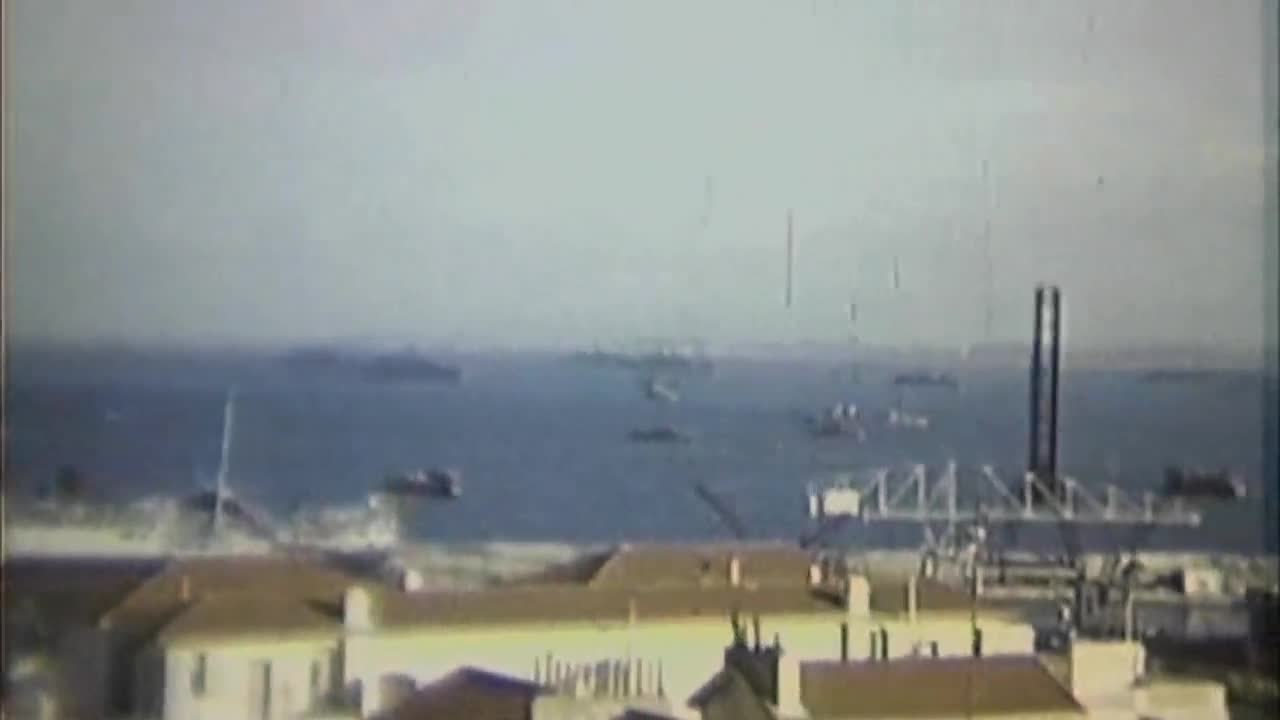
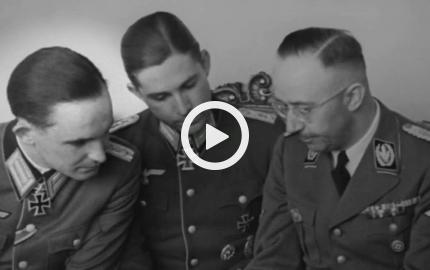

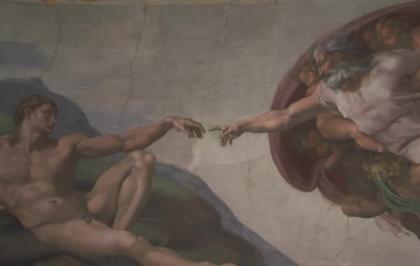

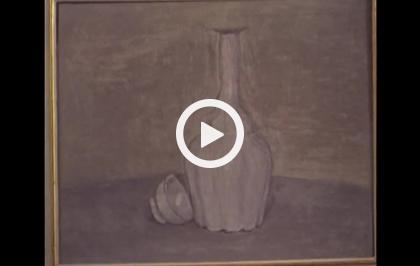
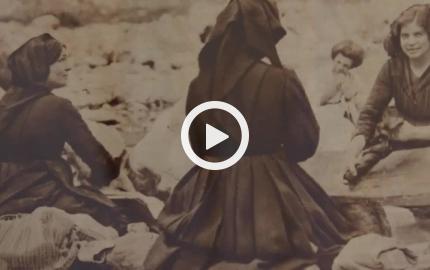







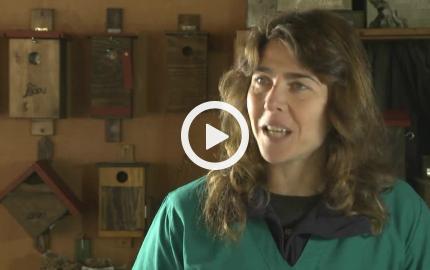









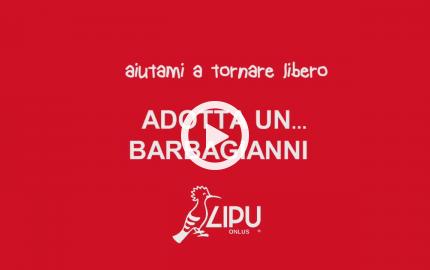



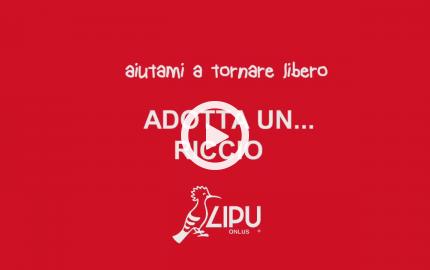


 è un marchio
è un marchio